A Pastry Chef Details 16 Southeast Asian Flavors, From Red Bean To Durian, For Next-Level Baking
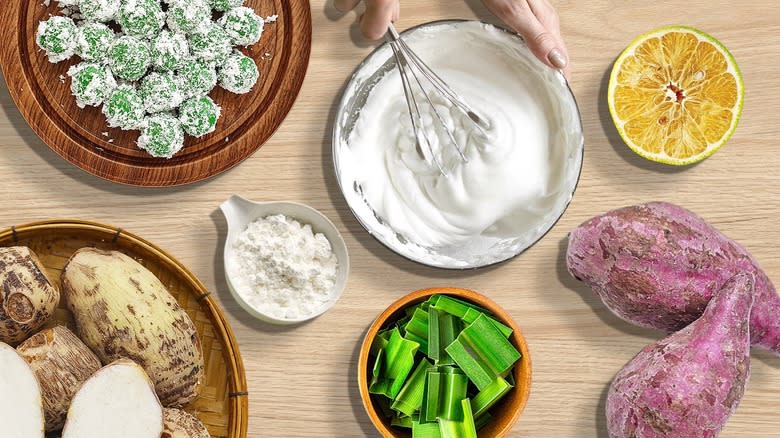
Southeast Asian baking celebrates bold flavors, scents, and textural delights (with the odd challenge along the way — we're looking at you, durian). You might know your muscovado from your brown sugar and your cornflour from your cornstarch, but if you've never baked with salted egg, taro, calamansi, or the aforementioned durian, get ready to have your culinary horizons broadened in the tastiest way possible.
Auckland-based Folds Patisserie is daring New Zealand's collective palette to embrace the tantalizing flavors of Southeast Asia, one dainty dessert at a time. The patisserie, which opened in 2021, spotlights iconic Southeast Asian flavors in new, beautiful, and delicious ways. We caught up with owner and chef Wendy Lau to get all the delectable details behind the juicy, vibrant, lush tastes of Southeast Asia so that you, too, can elevate your home baking. And if it's all feeling a bit daunting, pandan is a great place to start.
Read more: 30 Types Of Cake, Explained
Pandan
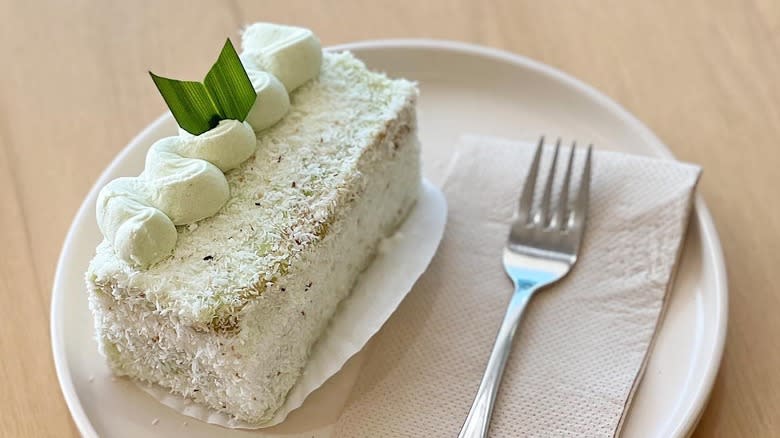
Sporting a vibrant, borderline-nuclear hue of green, pandan brings a refreshing pop of color to any patissier's cake stand. Near impossible to source outside of tropical countries in its natural form — the long, flat leaves of the screw pine palm — your best option is to buy frozen pandan leaves from your local Asian supermarket. "But since the pandan has been frozen," explains Lau. "I don't find the taste strong enough so I do use some extract as well to enhance it even more." Pandan extract is made by blending defrosted leaves with water, straining through a sieve, then leaving until the juice separates into a bright green band (about an hour).
But what is pandan, and how do you use it? With an earthen vanilla taste and fragrance, pandan can carry all sorts of desserts, including croissants and lamingtons, or its leaves can be used to scent savory dishes or as wraps to stop meat from drying out. "Pandan extract can be used to replace vanilla extract in desserts," states Lau, saying that "you would need to use a little more than you would vanilla. If the same recipe also has milk in it, I like to replace with coconut milk to let the pandan taste shine through even more."
Taro And Ube
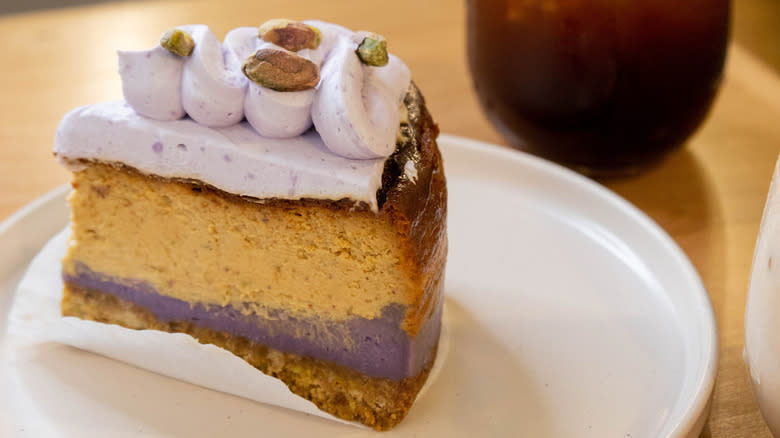
A yam of Southeast Asia, ube naturally puts food on a spectrum of purple, from lavender to deep violet. Distinct from purple sweet potatoes, ube makes for a thick and chunky mash with notes of nuts and sweet vanilla and contains anthocyanins, a type of antioxidant. Not convinced? Try toasted bread with purple ube halaya for a bright breakfast treat. Taro is a starchy white root vegetable flecked with violet in a brown casing. It's hugely versatile, lending itself to stews, desserts, and everything in between. It grows everywhere, from the Caribbean to Southeast Asia via Africa, the Middle East, India, the Pacific Islands, and more.
Taro and ube tend to be used interchangeably or together in Southeast Asian cooking. Both have subtler flavor profiles, so larger amounts are required for the full presence to be felt in the baking. The pair work well in cheesecake (pictured) and also make for gorgeous beverages. "... I like to make it as a paste mixed with coconut (helps enhance the flavor) as it makes it easier to incorporate it as a filling as well as in lattes," says Lau.
Salted Egg
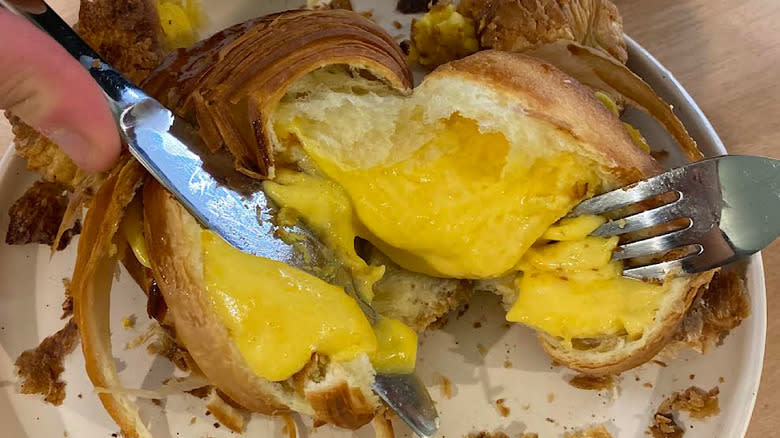
The Takeout dubbed 2023 "The Year of Salted Egg Yolk," so it's kind of a big deal. Nevertheless, first-timers approach the flavor cautiously, perhaps confused as to where it sits on the spectrum of sweet to savory, thanks primarily to an enormous proliferation of salted egg yolk-flavored oddities from crispy salmon skin to custard buns.
Salted egg yolk fever hit Singapore in 2016, arriving from China. It's the bright orange ball you might discover inside a mooncake, and it's prepared by brining duck eggs in salt or a salt solution. It has a semi-solid buttery, creamy texture, and its taste is strong, pickled umami. It is best used in small amounts, akin to how we use anchovies and parmesan cheese. If you're game to give salted egg yolk a try, take a leaf from Lau's cookbook and whip it into an almost-liquid custard in a croissant (pictured), an all-out custard in a Swiss roll, or as an add-in for sweet and savory cookies.
Durian
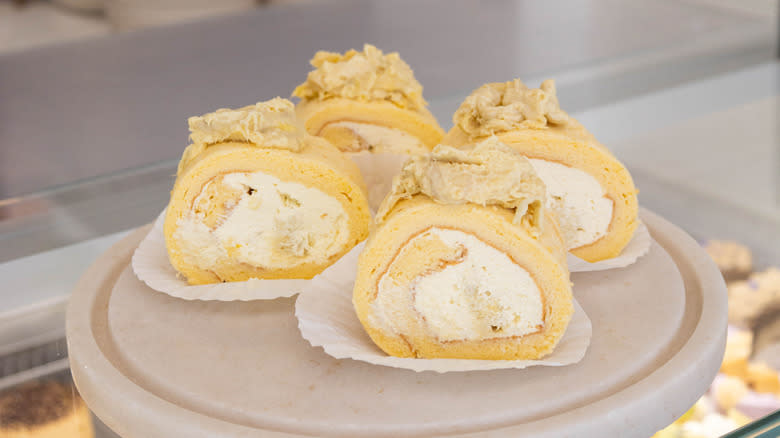
Known colloquially as the King of Fruits, durian is also the King of Controversy. Due to its pungent odor, strict rules govern its appearance in public, and the fruit is bound tightly in plastic at markets in an attempt to defend punters' nostrils. Some hotels and apartments forbid the fruit outright. Assault by durian is not a quick and painless event — it tends to stain indelibly, so use gloves when handling.
Durian flesh looks a bit like mango, but the texture is of cotton candy tendrils that cling stubbornly to your teeth and tongue, effortlessly fending off any attempts to wrench the offender from your mouth. Despite sounding something straight out of a horror movie, durian remains a delicacy and an essential part of the Southeast Asian flavor experience. "The taste of durian is very creamy and sweet — almost custard-like," Lau explains. "But there's also a lot of different types of durian, some orange, some really small, and some that have a slight bitterness to them." Baking into a cake or tart is the perfect medium to meet durian because the texture can be tempered, and the smell is subdued in the baking process for a gentle introduction. Use it as a filling (or topping) when you're ready to crank the intensity, like in the durian Swiss rolls above.
Calamansi
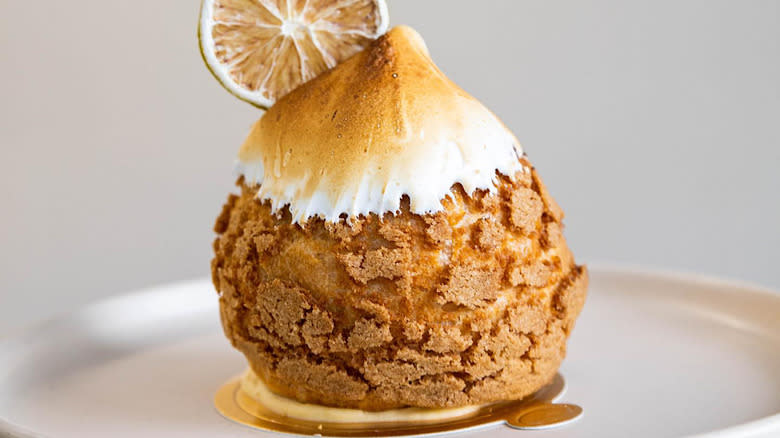
Lesser known outside of Southeast Asia, calamansi deserves recognition for elevating any baking with a Southeast Asian twist. "I think calamansi will start appearing more often," Lau says. "It's a citrus fruit that we grew up using in our drinks instead of the usual lemonade but it's been slowly making a reappearance in the baking scene." The fruit is difficult to find in the U.S., but bottled calamansi extract or frozen juice is relatively easy to source online. The round green citrus with a vibrant orange interior is an essential Filipino ingredient used as a source of acidity. All parts can be eaten, and the peel is sweeter than its flesh.
Calamansi can be incorporated into baking as you would a lemon or lime, and it makes a particularly fabulous meringue-dipped choux (pictured) but making muffins is the ultimate, most authentic way of baking with calamansi. A small island roughly in the middle of the Philippines, Boracay is home to Real Coffee & Tea Cafe, a breakfast cafe that bakes zesty muffins with a cult following. The star ingredient? Copycat recipes suggest it's the ¼ cup of calamansi juice in the muffin mix.
Coconut
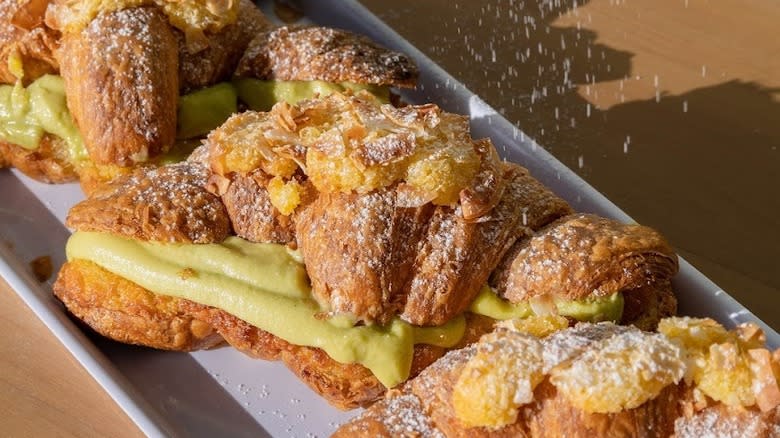
Coconut is the jack-of-all-trades of baking. It can be a gluten-free base, a dairy-free cream or milk, or a textural topping — when coconut's involved, there are no limits. Lau says, "... when cooking coconut, especially when making jellies, don't over-boil it as the fat can separate from the water causing the jelly to be white on the top and translucent on the bottom (unless that's what you are going for)."
There is a massively popular iteration in the form of a golden brown jam called kaya. If you haven't started a day with a slick of butter and kaya on hot toast or a croissant, you're missing out. Popular in Singapore and Malaysia, kaya is made from coconut milk or cream, sugar, and eggs blended into a caramel. Nyonya kaya is greener thanks to infusing the eggs with pandan, while Hainanese kaya is brown. Both are thick and moreish, and you'll definitely consider ditching the toast entirely and just going at it with a spoon.
Gula Melaka
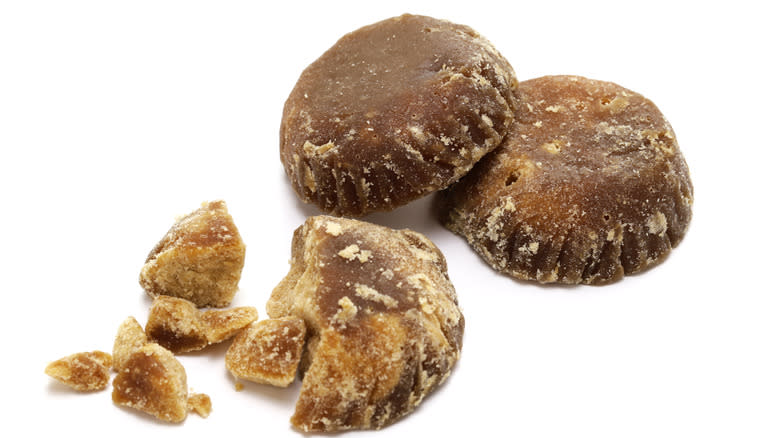
There's a particular type of heat in Southeast Asia. It's searing and dense with next-level humidity. Whether it's the resulting need to hard-commit to maintaining your hydration levels (sugared beverages coming into play here) or simply a cultural penchant for the saccharine, sugar in the form of gula melaka is queen.
Gula melaka, also known as palm sugar and colloquially as liquid gold, is a sweetener made from the sap of coconut palm flowers. Gula is the Malay and Indonesian word for sugar. The word that follows— in this instance melaka— refers to the type of palm. Carrying notes of coconut and rich molasses, you'll find gula melaka in Asian food stores as compressed cakes or blocks. Just as sugar can be used to create a moreish flavor bomb in baking and desserts and add a nuanced depth to savory dishes, gula melaka is gleefully incorporated into all sorts of Southeast Asian dishes. Much-loved recipes that spotlight the beloved sugar include steamed palm sugar cake, moist butter cake, upside-down pineapple cake, sugar-spiked sago pudding, ondeh ondeh, and pandan gula melaka jelly.
Ondeh Ondeh
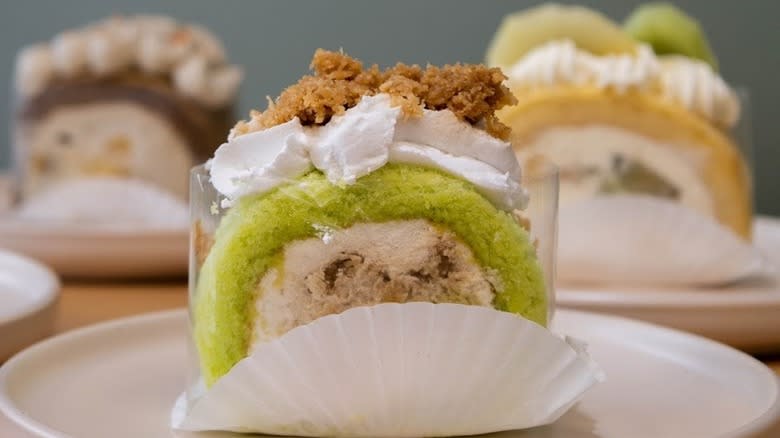
Malaysia's kuih desserts are a world of colors and flavors, and klepon — aka ondeh ondeh — is no exception. Ondeh ondeh, which translates as little balls, is the climactic result of flavoring glutinous rice balls with pandan, stuffing them with gula melaka, and rolling them in shredded coconut. The bright green balls make for a sweet feast of textures, the crunchy coconut contrasting with the squishiness of the glutinous rice and the smooth caramel notes of the gula melaka. Provided you can source pandan, making classic ondeh ondeh — a Malaysian take on Japanese mochi — is relatively straightforward.
For a more contemporary spin on this flavor combination, Lau has turned this classic snack into a showstopping Swiss roll (pictured). "Similar to the ondeh ondeh we have the pandan as the outer layer of the dessert with the gula melaka center," says Lau. "Instead of having a liquid center we thought it would be best to cook it with freshly grated coconut to bring out even more of the coconutty-ness."
Teh Tarik
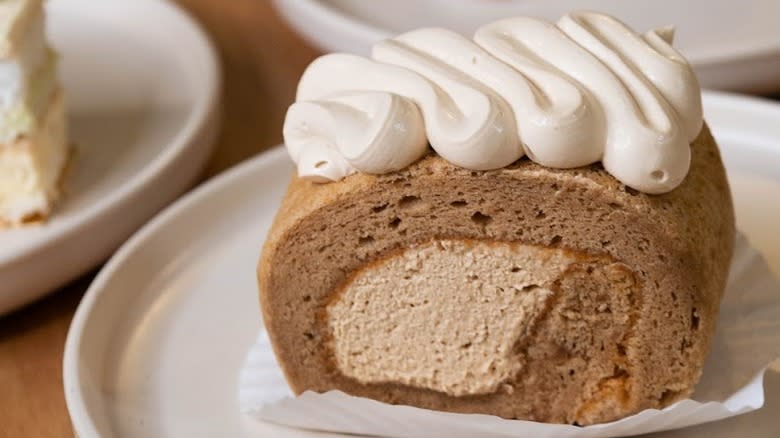
Translating to 'pulled tea' in English, teh tarik, also known as Malaysian milk tea, tests a server's depth perception. A dramatic pour is essential — the pot must be pulled upwards mid-pour, creating an impressive pot-to-cup stream that froths and mixes and demands attention. The second vital element? Condensed and evaporated milk for sweetness, as in only rivaled by the heady elixirs of Türkiye, Jordan, and Egypt-level sweet. Make it yourself using Ceylon tea.
The sanctity of tea and cakes transcends cultural barriers, and when tea is in the cake, it's a whole new world. Teh tarik can take a sponge in an unexpected yet wonderful direction. "Some like to use ready made teh tarik powders or what we do is make teh tarik and replace the liquid in our recipe like for like," explains Lau. "For the whipped cream we would infuse the tea with part of the cream to extract the flavor while also replacing the sugar/icing sugar with condensed milk to taste."
Tamarind
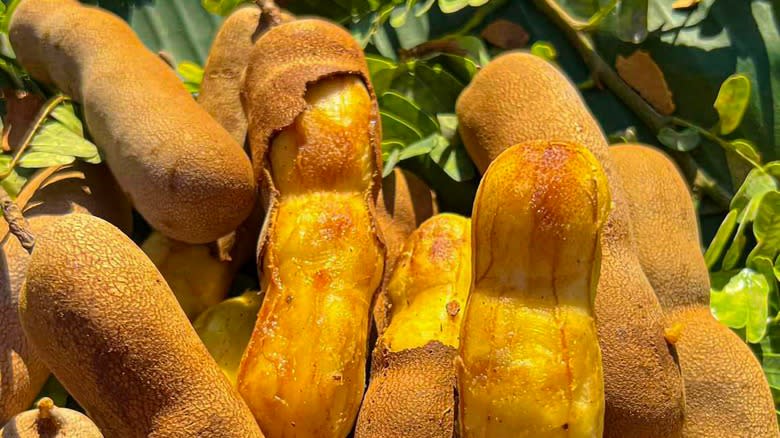
Sticky, sharp, sour tamarind is the reason you can never get enough Pad Thai. It's the tang in laksa and the palette-relieving brown sauce tacked on the side of satay skewers. It's the yang to a sweet yin. Lau cautions, "Use it in smaller amounts as it can be quite sour and may overpower the overall dessert."
Growing on trees in long, bubbled pods, tamarind, also known as asam jawa, appears as fresh fruit, pulp, paste, concentrate, powder, or extract. If you've got your hands on tamarind pulp, you'll need to prep it before you use it, which involves soaking it in hot water, de-seeding, and squeezing so you're left with a dark brown paste. Tamarind features in this refreshing Thai Tea recipe, which could, in turn, be incorporated into a sponge-based dessert, just like the tarik.
Sago And Tapioca
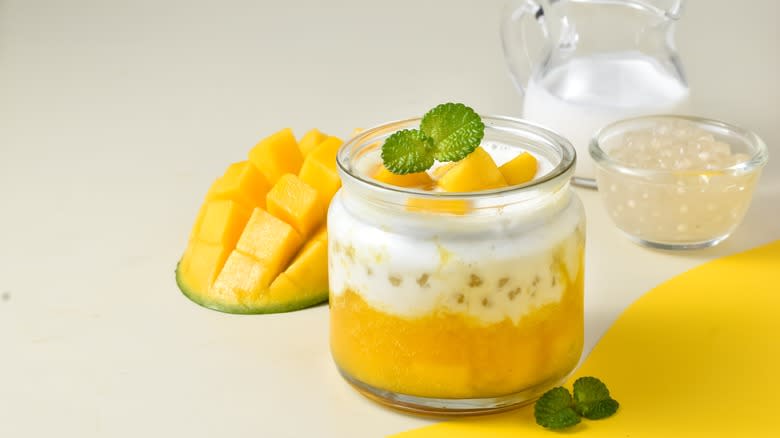
Sago is a starch from the Metroxylon sagu (sago) palm tree, which grows in Indonesia, Malaysia, the Philippines, and Papua New Guinea. It's sold as flour or pearls and can be mixed with water and a little heat to form a sticky mass that's more important than the relatively neutral flavor. "Sago desserts were something we would have growing up where it was found in Buburchacha (usually a warm sweet coconut "broth" cooked with sweet potato, pumpkins, and sago) or as a cold desert with Mango and coconut," Lau reminisces, noting that sago is increasingly being overshadowed by bubble tea pearls made from tapioca, which is made from cassava.
A surprising Southeast Asian go-to (given the rise and fall of tapioca pudding in the U.S.) is mango-coconut tapioca pudding. Again, tapioca and sago are different beasts, but they share similar gelatinous properties that work well in pudding, and the terms are used interchangeably. Mango sago originated in Hong Kong, but it's become so popular throughout Southeast Asia that it's now a firm part of the local culinary scene.
Mango
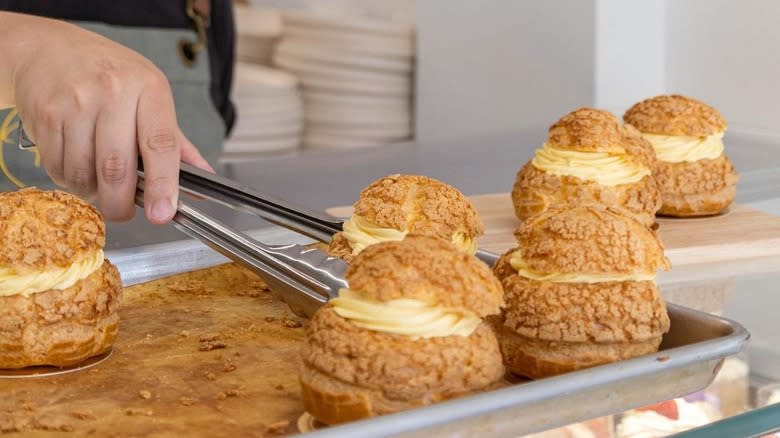
Thailand is the third largest mango producer in the world, growing over 3 million mangos annually. It's unsurprising that mango features heavily on menus across Southeast Asia, sweet or otherwise. Most famously paired with white or butterfly pea blue sticky rice and bathed in coconut milk, mango also makes a welcome addition to salads or can be a tangy salad base in its own right, paired with chilies, shallots, and a zesty lime dressing.
In baking, you'll find it in the traditional Thai dessert khek ma-muang, a cake with a coconut base and cream icing piled high with mango, but it's just as well-placed in cheesecake form combined with caramel or reimagined in vanilla mango daifuku choux (pictured). The latter strikes a sublime textural balance, the soft mango mascarpone curd and chewy mochi a counterpoint to its crunchy vanilla craquelin surround. Opt for the freshest mangoes you can find for maximum return on investment.
Black Sesame
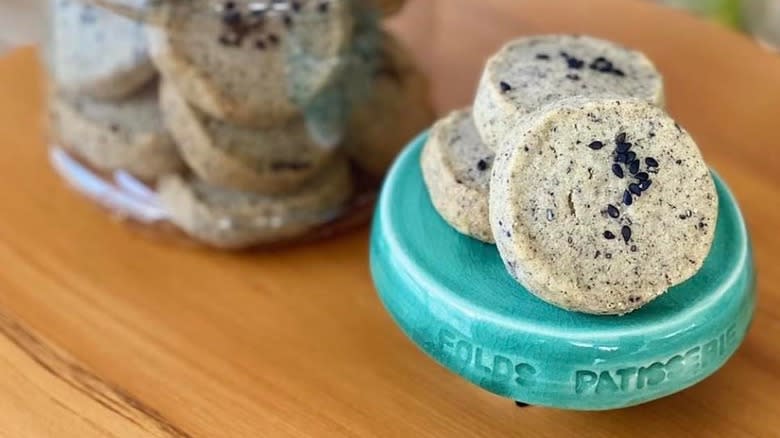
A simple salad demands attention when adorned with black sesame. While garnishes are massively important in that they can make or break a dish, sesame was meant for so much more. Enter black sesame paste. Not to be confused with tahini, which is a paste made from raw sesame seeds, black sesame paste is a gloriously thick, umami-rich sludge made from ground toasted sesame seeds.
It tends to appear in Asian baking as is or paired with nuts. "Sesame has quite a nutty taste to it and if using too much can almost taste savory," explains Lau. "... we usually use it as either a paste or powder to flavor our baking." Mix black sesame into cakes, cookies (pictured), Burnt basque cheesecakes, lattes, and more.
Cendol
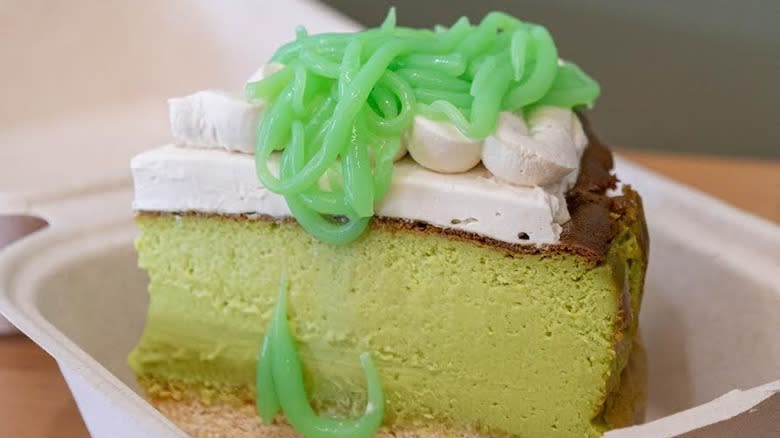
Cendol is another iteration of pandan, rice, coconut, and gula melaka, and it's been slurped back for over 900 years. Depending on which part of Southeast Asia you're in, the name can refer to bright green jelly strips made from rice flour (Indonesia) or to a complete dessert (Malaysia, Brunei) where the jelly appears in a sweet milk coconut soup or layered on top of things like mung beans and fruit. In fact, each region has its own name for the dessert, from dawet in Javanese and chè ba máu in Vietnamese to lod chong in Thai and let saung in Burmese.
Resembling a clew of atomic worms, it's easy to see why cendol would be a worthy addition to your next Halloween spread, but it has the potential to be a spectacular garnish for baking all year round. Besides, it's naturally vegan and gluten-free. Level it up as ais kacang (loaded with corn, red beans, milk tea, syrup, peanuts, and tapioca pearls), or transform it as Lau has done in her cendol cheesecake (pictured) where a coconut-pandan filling sits on a base of digestive, topped with whipped coconut with a lick of gula melaka and the pièce-de-résistance: a generous handful of those neon squiggles.
Red Bean
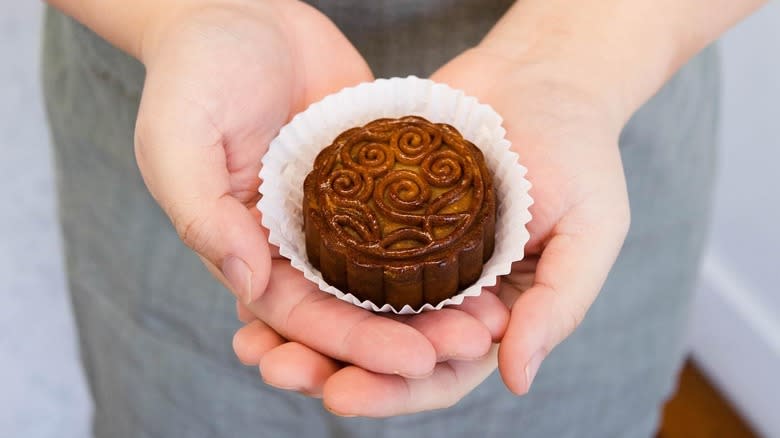
Red beans are prolific in Southeast Asian baking. They appear in everything from mooncakes (pictured) and shaved ice to sweet, pillowy buns, but many different types of beans can be considered "red." Some recipes name adzuki beans, while others talk about mung beans. So, what exactly are these recipes referring to? To clear matters up once and for all, "red bean" refers to adzuki beans, which are the same as red mung beans. They're typically used as whole beans or as a sweetened paste from soaked, cooked, and pureed adzukis.
Red beans are chewy and dense, like black beans with a sweet edge, unsurprising as they're often combined with white and dark brown sugar. Commercial pastes are dark red, while homemade pastes tend to be more of a deep purple color (the former is often plumped with red 40 food coloring). Where many Southeast Asian flavors are popular for aesthetic or practical reasons — color, texture, binding properties — red beans bring the bonus of packing a punch in terms of protein and folate, as well as vitamins and minerals like manganese, phosphorus, potassium, copper, magnesium, zinc, and iron.
Matcha
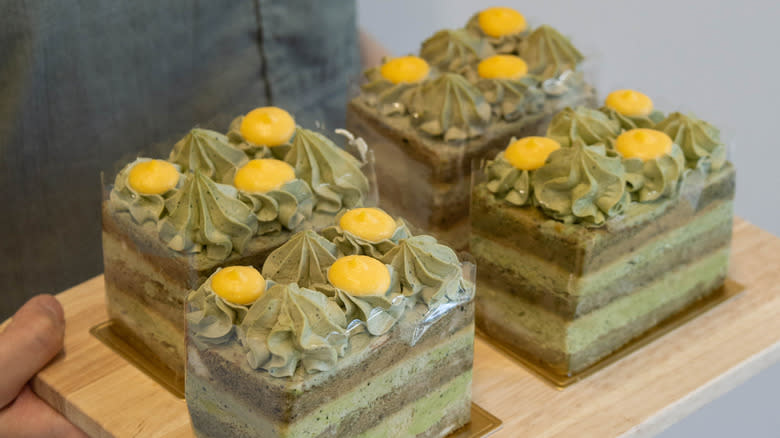
While not strictly a Southeast Asian flavor — it's most commonly associated with Japan — matcha has become so prominent in the contemporary culinary scene that we'd be remiss not to include it. Matcha is related to black and oolong tea and is made from grinding Camellia Sinensis leaves. It has a grassy, earthy taste and has all the health benefits of green tea. It's caffeinated, but typically, less caffeine is consumed when drinking matcha (compared to coffee), and the caffeine has a more gradual effect on the body than coffee due to the presence of an amino acid called L-theanine.
Matcha is a highly versatile ingredient, and its powdered form is easily incorporated into baking. Here are 25 unexpected ways to use matcha in your daily cooking, for starters. "I personally love using it as a sponge as well as a whipped ganache," says Lau. Top tip: Keep matcha in an airtight container for as long as possible and consume matcha-dusted baked goods the day they were made, as the color fades with exposure to air.
Read the original article on Tasting Table


